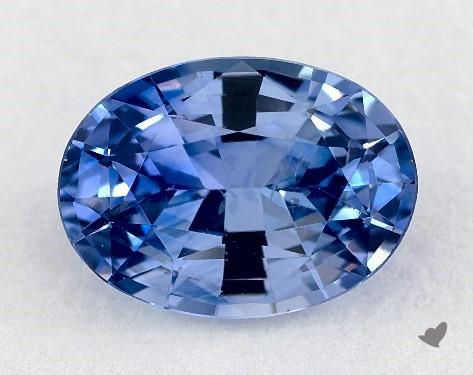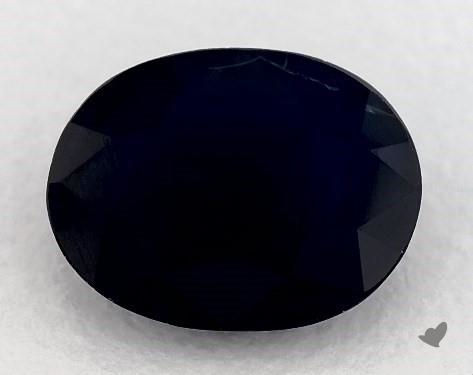Ceylon Sapphire
What Makes it So Special?
- Home /
- Birthstones by Month /
- Ceylon Sapphire
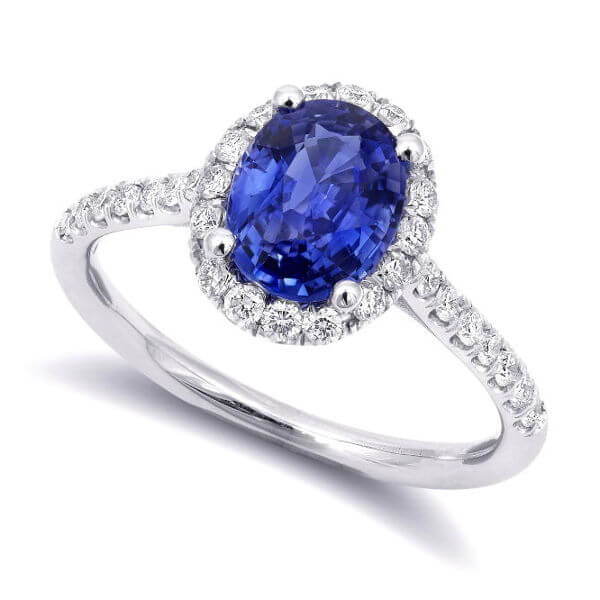
Looking at a Ceylon sapphire can take your breath away. Blue sapphires are amongst the most beautiful, natural gemstones sought by collectors worldwide.
What Are Ceylon Sapphires
Sapphires are mined in many locations throughout the world - Kashmir, Burma, Sri Lanka, Madagascar, Australia, the United States, Thailand, Vietnam, China, Kenya, Tanzania. However, the three locations most famously known for their high-quality Sapphires are Kashmir, Burma, and Sri Lanka.
The ones originated from the Kashmir mines are the rarest and considered most valuable of them all. This is also due to the fact that the mining was active for only about 40 years between the 1880 and 1920.
Next runners up and considered to be the best sapphires today are the ones mined in Sri Lanka. Not many people know but Sri Lanka is called Sri Lanka only since 1948, after gaining its independence from Britain. In 1505 when it was in the hands of the Portuguese it was called Ceilão and the Dutch later changed it to Zeylan. Then, in 1802, it became part of Britain, a crown colony, and its name became Ceylon.
The blue sapphires from Sri Lanka, now referred to as Ceylon Sapphires (and Sri-Lankan Sapphires) are known for being lighter, brighter, and more vivid than the dark blue sapphires that come from other countries.
Sri Lanka has some of the world’s oldest sapphire mines; blue sapphires have been mined there as far back as the second century A.D. In the fourth and fifth centuries, these beautiful stones were in high demand and were involved in international trades.
Ceylon Characteristics
Ceylon Sapphires are first and foremost sapphires. And as such, they share the same characteristics only that they are mined in Sri Lanka:
Sapphire Characteristics
| Mohs Scale | 9 |
|---|---|
| Chemical Formula | Al₂O₃ |
| Birthstone Month | Sapphires are September's birthstone |
| Anniversary stone | 45th anniversary |
Ceylon Sapphire Value and Pricing
Prices of sapphires, like diamonds, are priced per carat. But unlike in diamonds, where there is a diamond price chart, there is no official price chart for Ceylon sapphires (or any other sapphire for that matter).
With that in mind, the result is that the price tolerance, the price differences, between one seller to another are greater. Also, most Ceylon sapphires that you’ll see on the market are not certified so it is harder to compare qualities or in other words - comparing apples to apples.
As a result, the price of a 1 carat Ceylon sapphire ranges from about $300 to $1,500 and a 2 carat costs between $1,000 and $4,000. These are hgue gaps. Here is a price chart for some reference in case you are looking to understand how much your sapphire (or the one you are looking at) is worth:
Blue Ceylon Sapphires Price Table
| Weight | Price Per Carat | Total Price |
|---|---|---|
| 0.50 | $200-$500 | $100-$250 |
| 0.75 | $200-$1,000 | $150-$750 |
| 1.00 | $300-$1,500 | $300-$1,500 |
| 2.00 | $500-$2,000 | $1,000-$4,000 |
| 3.00 | $1,333-$3,000 | $4,000-$9,000 |
Please note that the above table of prices refers to non-treated sapphires. Meaning sapphires that were not heated or enhanced in any way. Enhanced sapphires would cost probably 25%-50% less of their equivalent natural ones.
Please also keep in mind that while the chart shows a big price range per sapphire though there are still also cheaper and more expensive in every range. I left the "chunky middle". With that said, the prices of the quality used in sapphire jewelry is somewhere in the middle of these.
And most importantly, there is no right or wrong. It is a matter of personal preferences. Would you rather having a deep blue near flawless 1 carat blue sapphire at $1,500 or would you rather have a slightly lesser quality 2 carat for the same price?
Ceylon Colors
It is important to know that while Ceylon Sapphires are known for their lively vivid blue color, sapphires mined in Sri Lanka, actually come in a variety of colors.
Among the different hues Ceylons may possess, you would find pink, yellow, green and violet. Each sapphire color from the Sri Lanka mines actually comes with its own characteristics. For example, pink sapphires, which are considered quite rare, are often found in smaller weight – under 2 carats. While the yellow sapphires are the exact opposite can be found in carat weight greater than 5 carats.
World-Famous Sapphires From Sri Lanka
Some of the world’s most famous sapphires have come from Sri Lanka, including the Logan Sapphire and the Star of India.
The Logan Sapphire – 423 Carats of Blue Beauty
The Logan Sapphire is a 423-carat flawless cushion-cut blue sapphire cut from a crystal mined in Sri Lanka at an unknown time. This heavy sapphire has light violet overtones and is mounted in a silver and gold brooch setting surrounded by 20 diamonds that total about 16 carats.
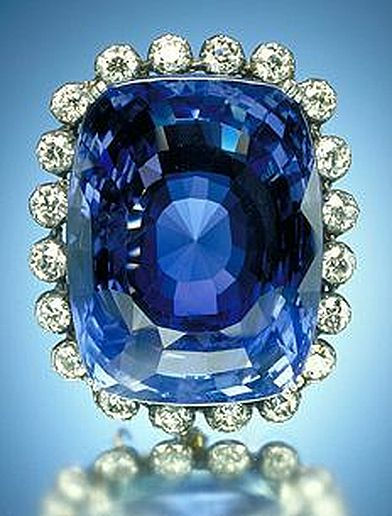 Chip Clark, Smithsonian staff, via Wikimedia Commons
Chip Clark, Smithsonian staff, via Wikimedia Commons
This amazing specimen is said to have been originally given to Sir Ellice Victor Sassoon by a maharajah in India. Sassoon sold the gem to Col. M. Robert Guggenheim, who gifted the gem to his wife, Rebecca, in 1952. In 1960, Rebecca Guggenheim donated the sapphire to the Smithsonian Institution. At the time of her donation, she was married to a man named John Logan, which is why the gem is referred to as “the Logan Sapphire.”
The Star of India – 563.35 carats of Blue Brilliance
The Star of India is the world’s largest ceylon sapphire and weighs in at 563.35 carats. It’s about the size of a golf ball.
Toward the end of the 19th century, J.P Morgan commissioned mineralogist George Kunz to amass a large collection of gemstones to be displayed at the 1900 Paris Exposition. After the expo, in 1902, J.P. Morgan donated the Star of India to the American Museum of Natural History in New York where it remains housed in the J.P Morgan Hall of Minerals.
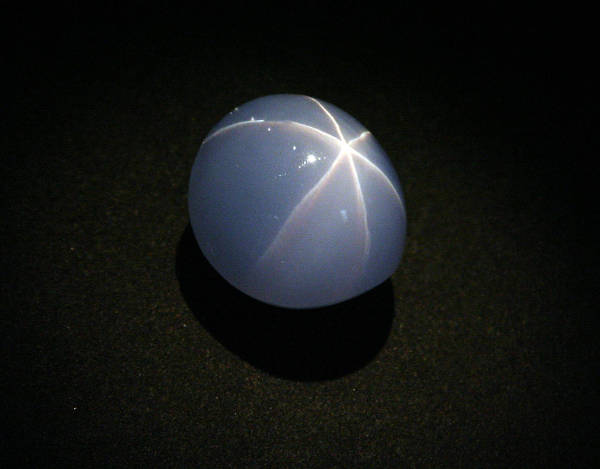 This picture was taken by Daniel Torres, Jr. on January 14, 2007.RenzokukenLH at en.wikipedia, Attribution, via Wikimedia Commons
This picture was taken by Daniel Torres, Jr. on January 14, 2007.RenzokukenLH at en.wikipedia, Attribution, via Wikimedia Commons
The Star of India is estimated to be two billion years old and was discovered roughly 300 years ago in Sri Lanka. It’s unclear why it was named “Star of India” rather than “Star of Ceylon,” as you might expect. However, it’s possible the origin was mistakenly attributed to India at the time of its original sale since many beautiful sapphires came from India at that time.
The reason this gem is called the Star of India is because it has rutile inclusions that create the appearance of a star with 6 rays. Finding gems with 6 rays is common, but 12 rays are rare. Although the Star of India has just 6 rays, the stars can be seen from the top and bottom of the stone, which is rare.
The Star of India was stolen from the museum in 1964
In 1964, three thieves used a glass cutter and duct tape to steal a total of 24 gems from three display cases in the American Museum of Natural History, including the Star of India. Some of the other gems stolen include the DeLong Star Ruby, the Eagle Diamond, and the Midnight Star. The stolen gems were valued at $400,000. At that time, gem heists were common, occurring about every 32 seconds.
The Star of India was later recovered in a water-logged suede pouch along with eight other gems. The museum, realizing their lax approach to security contributed to the ease of the heist, has since increased their security.
Ceylon Sapphires Are Almost as Desired as Diamonds
On the Mohs scale of hardness, blue Ceylon sapphires come in at 9, which is very close to diamonds, which rank at 10. This makes sapphires highly desirable gems for jewelry, since people want gems with durability.
Another reason these blue gems are in high demand is their versatility in style. They can be cut to various shapes like ovals, emerald shapes, and circles, and their rich, blue color allows them to be surrounded by other types of smaller, brilliant gems.
No matter how you cut or set a Ceylon sapphire, their beauty and elegance is undeniable.

